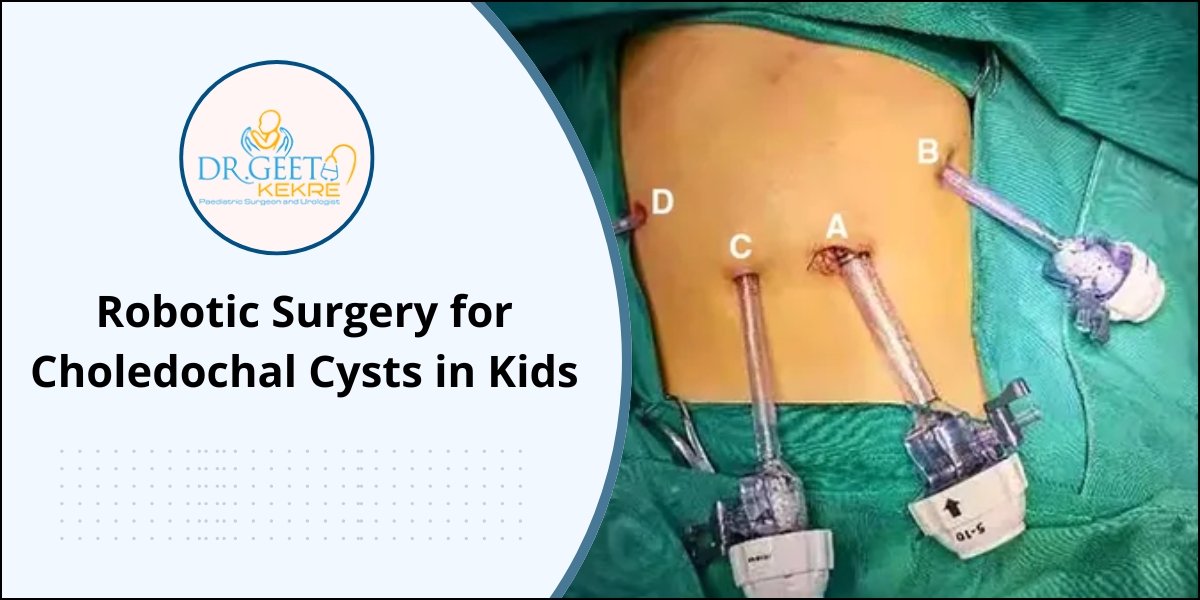Choledochal cysts are rare congenital bile duct anomalies that primarily affect children. If left untreated, they can lead to severe complications like liver damage, pancreatitis, or even cancer. Traditional open surgery has been the standard treatment, but advancements in medical technology have introduced robotic-assisted surgery as a safer, minimally invasive alternative for pediatric patients.
In this blog, we’ll explore:
✔ What choledochal cysts are
✔ Symptoms and diagnosis in children
✔ How robotic surgery works for choledochal cysts
✔ Benefits over traditional open surgery
✔ Recovery and long-term outcomes
What Are Choledochal Cysts?
Choledochal cysts are abnormal dilations (enlargements) of the bile ducts, which carry bile from the liver to the small intestine. These cysts can obstruct bile flow, leading to infections, jaundice, and liver damage.
Common Symptoms in Children:
- Abdominal pain (especially upper right side)
- Jaundice (yellowing of skin/eyes)
- Nausea and vomiting
- Fever (if infection occurs)
- Swollen abdomen
Early diagnosis through ultrasound, MRI, or CT scans is crucial to prevent complications.
Traditional vs. Robotic Surgery for Choledochal Cysts
1. Open Surgery (Traditional Approach)
- Involves a large abdominal incision
- Longer hospital stay (5-7 days)
- Higher risk of infection and scarring
- More post-operative pain
2. Robotic-Assisted Surgery (Minimally Invasive Approach)
- Uses the Da Vinci Surgical System for precision
- Small incisions (less scarring)
- 3D high-definition visualization for better accuracy
- Reduced blood loss and faster recovery
How Robotic Surgery Works for Pediatric Choledochal Cysts
- Small Incisions – The surgeon makes tiny cuts (5-10mm) in the abdomen.
- Robotic Arms Insertion – Miniaturized instruments and a camera are inserted.
- Surgeon Control – The surgeon operates from a console, controlling robotic arms with high precision.
- Cyst Removal & Reconstruction – The cyst is removed, and a new bile duct connection (Roux-en-Y hepaticojejunostomy) is created.
- Faster Healing – Less trauma to tissues means quicker recovery.
Benefits of Robotic Surgery for Kids
– Minimal Scarring – Small incisions lead to better cosmetic results.
– Less Pain – Reduced tissue damage means less post-op discomfort.
– Shorter Hospital Stay – Kids can often go home in 2-3 days.
– Lower Complication Rates – Reduced risk of infections and bleeding.
– Precision & Safety – Better visualization reduces damage to surrounding organs.
Recovery and Long-Term Outcomes
- Most children resume normal activities within2-3 weeks.
- Follow-up imaging ensures proper bile duct function.
- Long-term success rates are excellent, with minimal recurrence risk.
Conclusion
Robotic surgery is revolutionizing the treatment of choledochal cysts in children, offering a safer, less invasive, and highly effective alternative to traditional open surgery. If your child has been diagnosed with a choledochal cyst, consult a pediatric surgeon experienced in robotic-assisted procedures for the best outcomes.


